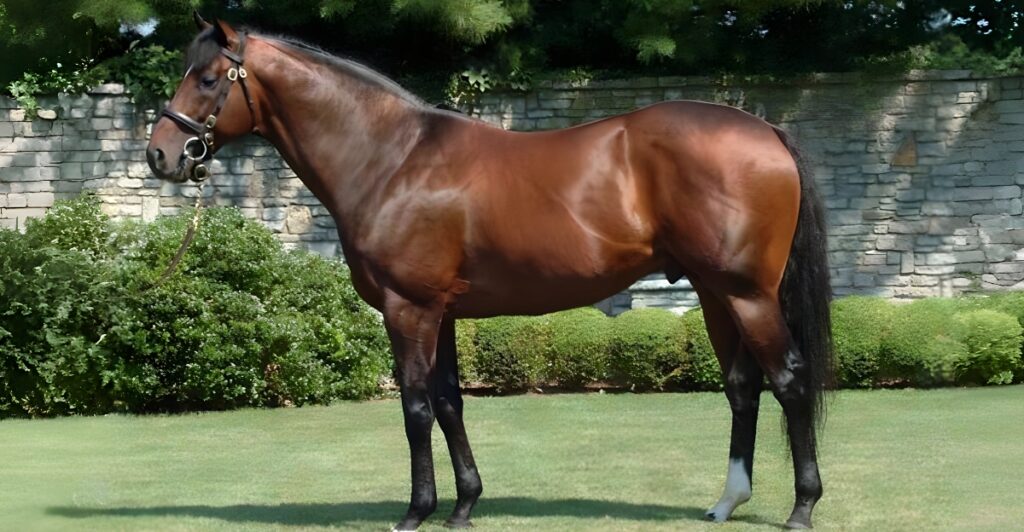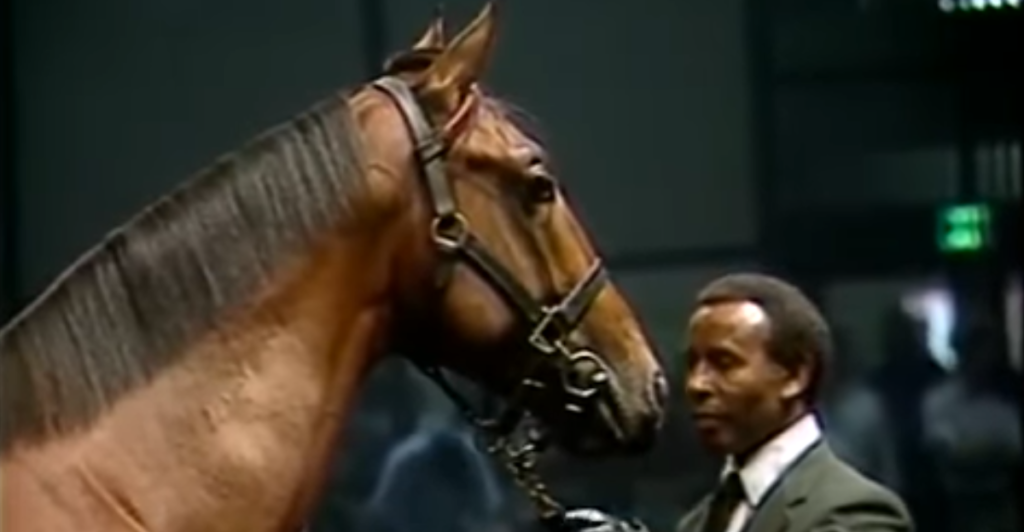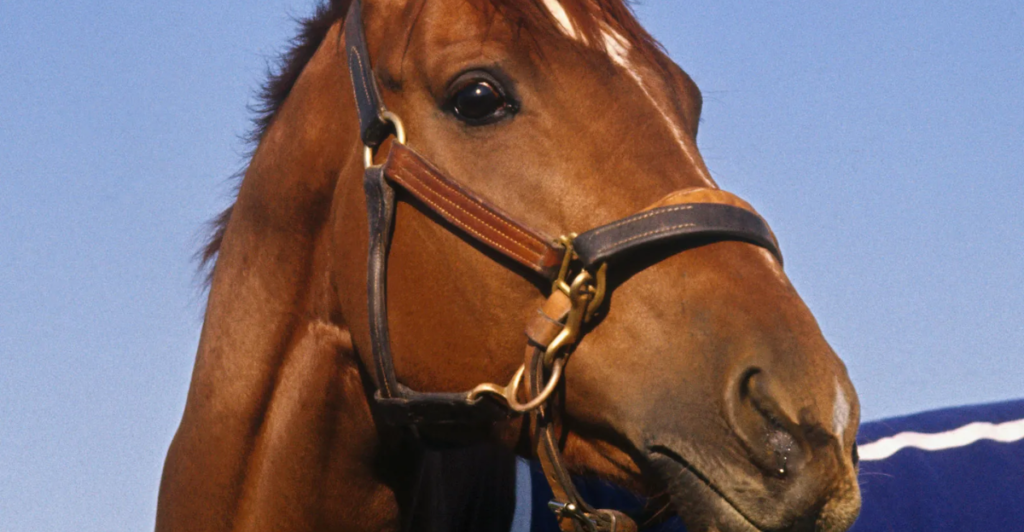
Horses have always symbolized wealth, power, and nobility, from their historical roles in war and transportation to their modern-day status as stars of elite equestrian sports. The immense value of these animals, however, lies beyond their performance. Horses with extraordinary pedigrees or athletic potential can fetch astronomical sums, driven by demand for their prowess on the track or their ability to pass on superior genetics. Let’s explore the world of multimillion-dollar horses, featuring the stories of 10 extraordinary champions and a look at what drives these sky-high prices.
Meydan City – $11.7 Million (2006)

Meydan City was purchased for $11.7 million by Sheikh Ahmed Bin Mohammad Al Maktoum, reflecting the global interest in Thoroughbred racing. While his racing career included just one major victory: the Group 2 UAE Derby in 2007, his pedigree made him a valuable stud. Sired by Kingmambo and out of Seattle Slew’s daughter Crown of Crimson, Meydan City contributed to the next generation of racehorses, demonstrating how lineage continues to drive demand even when performance is modest.
Seattle Dancer – $13.1 Million (1985)

Seattle Dancer’s $13.1 million price tag made headlines in 1985 as the highest price ever paid for a yearling at auction. As a descendant of Nijinsky II and Seattle Slew, his pedigree included some of the greatest names in horse racing. While his career on the track didn’t quite live up to his valuation, Seattle Dancer found significant success as a sire, producing 37 stakes winners, including notable names like Seattle Rhyme and Que Belle. His story emphasizes the enduring value of elite bloodlines in equine sales.
Better Than Honour – $14 Million (2008)

Better Than Honour carved her place in history as one of the most valuable broodmares ever sold. Her $14 million sale in 2008 reflected her incredible breeding success, producing Belmont Stakes winners Jazil and Rags to Riches. Descended from Kentucky Oaks winner Blush With Pride and sired by Deputy Minister, her lineage was highly coveted. While her own racing career was modest, her impact on Thoroughbred breeding is undeniable, showcasing the immense value of mares with proven records of producing champions.
Moorland’s Totilas (Toto) – $15 Million

Moorland’s Totilas, affectionately nicknamed “Toto,” was a dressage phenomenon that revolutionized the sport. His performances with Dutch rider Edward Gal earned him three gold medals at the 2010 World Equestrian Games, and he became the first horse in history to score over 90 in dressage. German breeder Paul Schockemöhle purchased him for $15 million, seeing both his athletic potential and value as a sire. Toto’s influence extended beyond his competition days, making him an enduring figure in equestrian history and a symbol of dressage excellence.
Palloubet D’halong – $15 Million (2013)

Palloubet D’halong became a sensation in the equestrian world after being sold for $15 million in 2013. This showjumping prodigy caught the eye of Jan Tops, a decorated Olympian, who purchased the horse as a gift for his wife, Edwina Alexander. Palloubet’s career included victories at elite events such as the Grand Prix of Rome and La Coruna, Spain. His remarkable talent was matched by his exceptional lineage, descending from the legendary stallion Baloubet du Rouet. As the most expensive showjumper ever sold, Palloubet’s legacy shines brightly in the sport.
The Green Monkey – $16 Million (2006)

The Green Monkey’s $16 million sale broke records for a two-year-old racehorse in 2006, largely due to his lineage, which traced back to Northern Dancer and Secretariat. Expectations were high as he entered the racetrack under intense anticipation. However, an injury sidelined him early, and his racing career ended with a modest $10,000 in earnings. His story serves as a reminder of the risks inherent in investing in young horses. Tragically, The Green Monkey’s life was cut short at age 14 when he was euthanized due to severe laminitis.
Annihilator – $19 Million

Annihilator’s sale for $19 million was fueled by the potential promised by his impeccable pedigree. This striking stallion, known for his dark chocolate mane, hailed from the bloodline of champions like Niatross and Wish Me Wings. Unfortunately, his racing career was less illustrious, yielding just $3,000 in prize money, and his offspring didn’t meet expectations. Despite this, Annihilator’s striking appearance made him a standout in show rings, demonstrating how aesthetics and lineage can significantly influence a horse’s valuation—even when performance falls short.
Shareef Dancer – $40 Million (1983)

Shareef Dancer, a British and American-bred Thoroughbred, made waves in 1983 when he was sold for $40 million. His lineage, descending from the legendary Northern Dancer, played a significant role in his valuation. Shareef Dancer justified his price tag by excelling on the racetrack, claiming victories in prestigious races such as the Breeders’ Cup Mile and the Grade 1 Metropolitan Handicap. His success extended into his breeding career, producing notable offspring like Bet Twice, the 1987 Belmont Stakes winner. His story highlights the profound influence of pedigree in the world of horse racing.
Justify – $60 Million (2018

Justify’s staggering $60 million valuation came on the heels of his incredible racing career. In 2018, he became one of only 13 horses in history to win the Triple Crown—a feat made even more impressive by his short career. Justify debuted in February of that year and retired undefeated after just six starts. His exceptional bloodlines, combining a sire known for speed with a proven dam, made him one of the most coveted Thoroughbreds. His early retirement allowed breeders to secure his superior genetics, ensuring his legacy lives on in future champions.
Fusaichi Pegasus – $70 Million (2000)

Fusaichi Pegasus holds the record as the most expensive horse ever sold, commanding an astounding $70 million. This Thoroughbred’s reputation was built on an illustrious racing career, highlighted by his Kentucky Derby win in 2000. He became a symbol of excellence, consistently performing at the highest levels of competition, including the Irish Derby and the Dubai World Cup. Beyond the racetrack, his value as a sire cemented his legacy, producing high-caliber offspring such as Bandini and Roman Ruler. His name, a fusion of “Fusao” (his owner’s name) and the Greek mythological Pegasus, reflects his legendary status in equestrian history.
The Impact of Pedigree in Equine Valuation

Bloodlines are the cornerstone of high-value horse sales. Elite horses often share a direct lineage with champions, making them highly sought after for their potential to inherit speed, stamina, and strength. The prestige of owning a horse tied to legendary names like Secretariat or Northern Dancer drives prices into the millions.
The High Stakes of Breeding Potential

In many cases, the true value of a horse lies in its breeding potential rather than its performance. A stallion’s ability to sire champions or a mare’s record of producing winners can far outweigh their career earnings. With stud fees reaching hundreds of thousands per mating, breeding offers long-term profitability for buyers. Beyond racing and breeding, elite horses represent status and prestige. For royals, billionaires, and equestrian enthusiasts, owning a multimillion-dollar horse is a symbol of wealth and passion for the sport. This exclusivity fuels the astronomical prices seen in the market.
References:
A List of the Most Expensive Horses Ever Sold
The Elite Equines: 10 Of The Most Expensive Horses Ever
Stay connected with us for more stories like this! Follow us to get the latest updates or hit the Follow button at the top of this article, and let us know what you think by leaving your feedback below. We’d love to hear from you!







